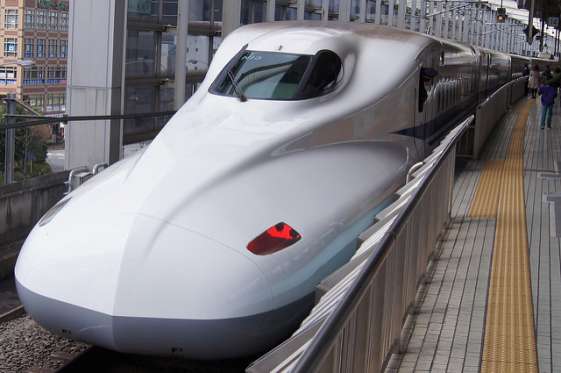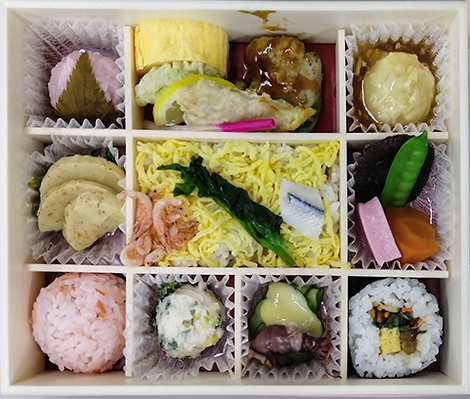Japan – the land of the rising sun, the talented artist geisha and the brave sumo wrestler. In Japan, you will find an endless supply of unique experiences and a culture like no other in the world. From watching the sun rise over sacred Mount Fuji to exploring Sakura (cherry blossom) season to the bathing snow monkeys, there is no shortage of things to do in Japan. In this series of articles, I put together my ultimate Japan Bucket list – the incredible experiences you can only have in Japan – and are guaranteed to remember forever. Some of these experiences are season specific – and so you may not be able to do them all in one trip. But if you are like many travelers you will fall in love with Japan and come back over and over again – to the land of welcoming people and the rising sun. Lets get started with Part 1.
Please note: This blog post may contain some affiliate links. More info.
Packing Travel Tip:
I have been scouring Amazon for the highest quality, most helpful travel items. From the softest leggings (perfect for the flight) to the most stylish suitcase, these are the best travel products on Amazon, designed to make your vacation even better. Go check out these great finds!

Things to do in Japan: 10 – Sumo Wrestler Training
The powerful Sumo Wrestler is an important symbol of Japanese pride and identify. In Japan, there are several ways to see sumo wrestlers (for instance, you can purchase tickets to a Sumo competition). However, the one of the most intimate and authentic way to see Sumo Wrestlers is also free. In Tokyo, you can attend a Sumo training session and enjoy several hours of watching the athletes in a uniquely Japanese atmosphere.
There are some rules to remember prior to attending a sumo training session. First, you must ask your hotel or hostel owner to call the stables in the day before, and ask them if you can attend, and what time the sessions start. Second, you must show up on time and stay the entire time (about 3 hours). Third, it is considered polite to bring a small gift as a thank you to your hosts. A box of cookies brought from home is a perfect gesture.
Assuming you follow the rules, after the training, many sumo wrestlers will gladly stick around and give you a chance to interact with them and take pictures. Sumo Wrestlers and the Japanese people in general, are extremely kind and accommodating to guests so you’ll be getting lots of special treatment in Japan!

Sumo Stables That Will Accommodate Tourists in Tokyo
- Hakkaku Stable:
- 16-1 Kamezawa, Sumida-ku, Tōkyō-to 130-0014, Tel : 03-3621-0404
- Starts at 7 am, call the day before
- Azumazeki Stable:
- 10 Shibamata, Katsushika-ku, Tōkyō-to 125-0052, Tel: 03-5876-5713
- Starts at 7 am, call the day before
- Asakayama Stable
- 21-1 Midori, Sumida-ku, Tōkyō-to 130-0021, Tel: 090-1505-1421
- English website Asakayama Stable
- Starts at 7.30 call the day before
- Arashio Stable
- 47-2 Nihonbashihamachō, Chūō-ku, Tōkyō-to 103-0007, Japan
- English website Arashio Stable
- Starts at 6:30 am, call the day before
- You can only watch practice from the window – cannot enter. Good option if you’d like to watch for a few minutes.
Things to do in Japan: 9 – Bullet Trains and Bento Boxes
You may already know that Japan’s culture is a unique mix of the traditional and the high tech And one of the best ways to observe this unusual combination is by taking a trip through the country on the high tech bullet trains – Shinkansen. The system connects most major cities in Japan, and a traveler can ride from the south to the north of the country in just a few hours. But the train system is about more than efficiency. Like everything else in Japan, the Shinkansen has rules and etiquette of its own.

Shinkansen Logistics
However, first let’s focus on the logistics. The Shinkansen is pricey, but you can save a lot of money by purchasing a weekly pass. With this pass, you can take virtually any train in the network without paying extra. The only way to get a Japan rail pass is to purchase one outside of Japan. The cost is $256 for a one week pass. To find a retailer google “buy japan rail pass.” The retailer of your choice will mail you the pass. If you are in a rush, try to find a retailer in your own city and go to their offices to pick up the pass.
Once you land, proceed to the JR office in the airport and book all the tickets you will need for the week. The helpful clerks in the office will help you figure out the schedule and the best trains for you. In addition to long-distance trains, you can also use the pass on many local lines in Tokyo and other cities. Again, ask the clerk for advice.
Shinkansen Etiquette
Next, let’s talk about the fun stuff – Shinkasen etiquette. The first thing you need to know about the Shinkansen is that it’s very safe. You’ll often notice businessmen popping off the train (leaving all their stuff behind) to make a phone call between stations. Second, the trains are very quiet. People speak in low tones only and once I shared a car with about 60 kids on a school trip. They were so quiet I forgot they were there! If you’ve ever shared a car in the states with kids on a school trip you know that’s virtually impossible to do! The Shinkansen is spotless – the Japanese take pride in cleaning up after themselves and so you’ll never find a wrapper or a cup. But my favorite part about the Shinkansen is the Bento Boxes.

The Art of the Bento on the Shinkansen
One of my personal favorite things to do in Japan is eating. There is no shortage of amazing and weird foods to try in the land of the rising sun. One great foodie experience takes place right on the Shinkansen. Bento boxes are an important cultural tradition for the Japanese. A bento box is a selection of different kinds of food, all placed attractively into a box (traditionally a wooden box). These boxes are often prepared by the homemaker for the working spouse and the children. Japanese homemakers take a lot of pride in Bento boxes and making a tasty and beautiful box is almost a type of art.
Of course, there are many bento boxes available for sale. Some are sushi based, but there are plenty of other kids as well – rice, noodles, fish, meat, desert – they might contain almost anything. Prior to boarding the Shinkansen pick up a Bento box in a train station. You’ll find a great selection and part of the fun is picking out the most interesting box. Then, once you board the train enjoy a meal with a great view. You’ll notice you are not alone – as my friend Tomoko said, one of the great pleasures of riding the Shinkansen is enjoying a great Bento.

Things to do in Japan: 8 – Enjoy the Best Sushi in the World in Kanazawa
And since we are on the subject of food… You probably already know that Japan is the birthplace of sushi and sashimi. Many tourists say that after you have sushi in Japan it’s almost impossible to enjoy it anywhere else. And you’ll get no argument from me. The sushi in Japan is mouthwatering fresh, expertly prepared with just the right amount of spice. You will find great sushi in Japan everywhere you go – a bar, the train station, a fancy restaurant or a cheap hole in the wall. All the sushi in Japan is great. But if you ask any Japanese person where the best sushi in Japan is – they will tell you: Kanazawa. And so, number 8 on my list of favorite things to do in Japan – travel to Kanazawa for sushi.

Kanazawa sits on the west coast of the main island (Honshu), on the Sea of Japan. There is no shortage of things to do in Kanazawa but my personal favorite is, of course, the sushi! There is a huge seafood market in center town and this is where the best sushi joints are located. I have a confession to make – I made my way over to this market for four meals a day and had sushi for breakfast, lunch, dinner, and snack. It was incredible – and the market itself is a sight to behold. You’ll find hundreds of spotless stalls lined beautifully with hundreds of types of seafood, many of which I did not even recognize. There are restaurants in the market and you can purchase fresh sashimi from many of the stands. The Kanazawa market experience is a must see.

________
End of Part 1
I hope you have enjoyed part 1 of things to do in Japan. Next time will cover best ways to see cherry blossom (Sakura) season, how to stay in a real Ryokan (a guest house) and what to do in an Onsen (Japanese bath), especially an Onsen that does not cater to tourists. Be sure to subscribe or bookmark this page and check in a few days for part 2!




